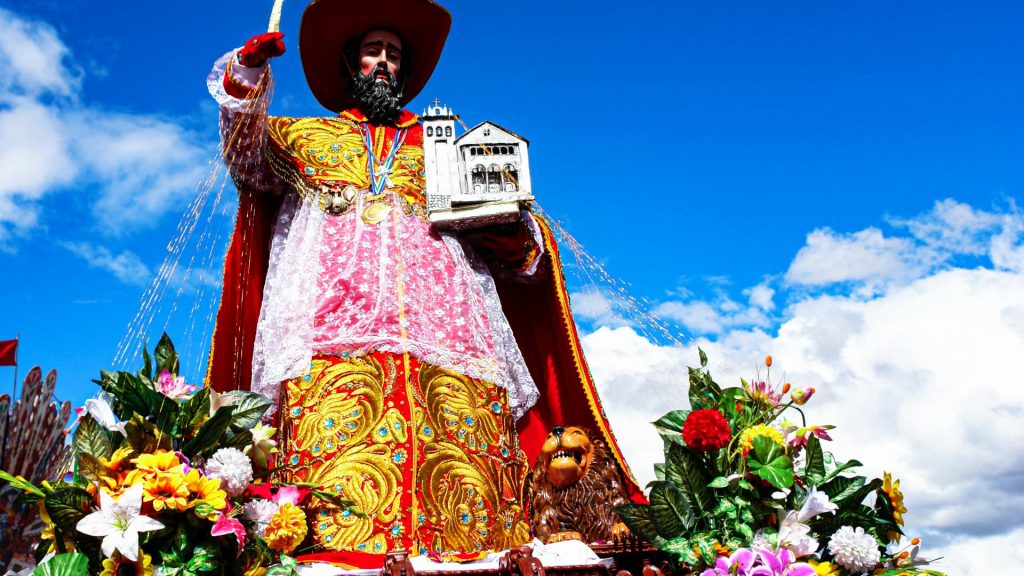Corpus Christi in Peru: Faith, Culture, and Tradition
Every year in Peru, the month of June is dressed with one of the most important and vibrant religious celebrations in the country: Corpus Christi. This festivity, which honors the presence of the Body and Blood of Christ, not only has a deep spiritual meaning, but it is also one of the most colorful and full of culture manifestations that can be experienced in the heart of the Andes. If you are passionate about the most authentic traditions and the most impressive festivities, Corpus Christi in Peru offers you a unique opportunity to immerse yourself in a world where faith, history and culture are intertwined in an explosion of color and emotion.

An encounter of faith in the heart of Cusco during the Corpus Christi
Corpus Christi in Cusco, one of the most emblematic celebrations in Peru, is not only a religious manifestation but also an event that shows the deep devotion of the city’s inhabitants and their link with ancestral traditions. The festival takes place 60 days after Easter and, although its origins are European, it has merged with local customs, creating a unique celebration that reflects the cultural mix that characterizes the region.
During this celebration, the streets of Cusco are filled with religious fervor, music, and dances as the inhabitants prepare for one of the most impressive processions in the country. At the center of it all is the Eucharist, a celebration that gathers thousands of faithful in the Plaza de Armas, where a special ceremony takes place. Moreover, the church of the Society of Jesus, one of the oldest and most beautiful in the city, is the epicenter of religious activities during these days.
In addition, this event has a dimension beyond the liturgical. It becomes a meeting point between the past and the present, where the Inca tradition merges with Catholicism. Thus, the Corpus Christi festivities in Cusco invite visitors to be part of a unique experience in which history, faith, and Peruvian culture intertwine in a deeply meaningful way.
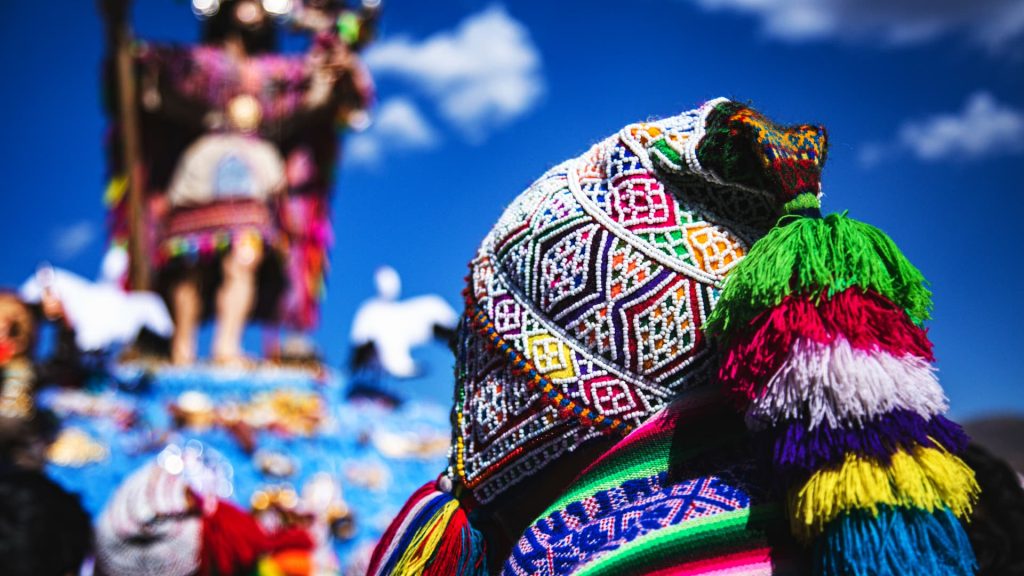
Procession of the Saints: A Display of Devotion and Art
One of the highlights of Corpus Christi in Cusco is the procession of the saints, which takes place on the Thursday before the festival. During this event, the images of the saints from the different churches of the city are taken in procession and carried to the Plaza de Armas, where masses and liturgical acts are celebrated. What is particularly impressive about this procession is the way the images are transported: on platforms adorned with flowers, fine fabrics, and lights, all accompanied by dances and traditional music.
What truly makes this procession unique is the coexistence of religious figures with Andean traditions. In fact, the people who participate in the festivity are not only witnesses of a religious act, but they are also part of a ceremony full of symbolism. Here, the cultural crossbreeding between Christianity and Inca customs is evident. Moreover, the dances and music of the Andean communities, such as the dance of the Q’ochas or the dance of the Ñustas, accompany the religious images, creating a vibrant and deeply spiritual atmosphere.
As a result, Cusco becomes a center of living art, where faith is expressed not only in prayer, but also in dance, music, and the beautiful carpets of flowers that adorn the streets through which the processions pass. In this way, the city transforms into a canvas of colors and traditions, inviting visitors to become part of this collective masterpiece.
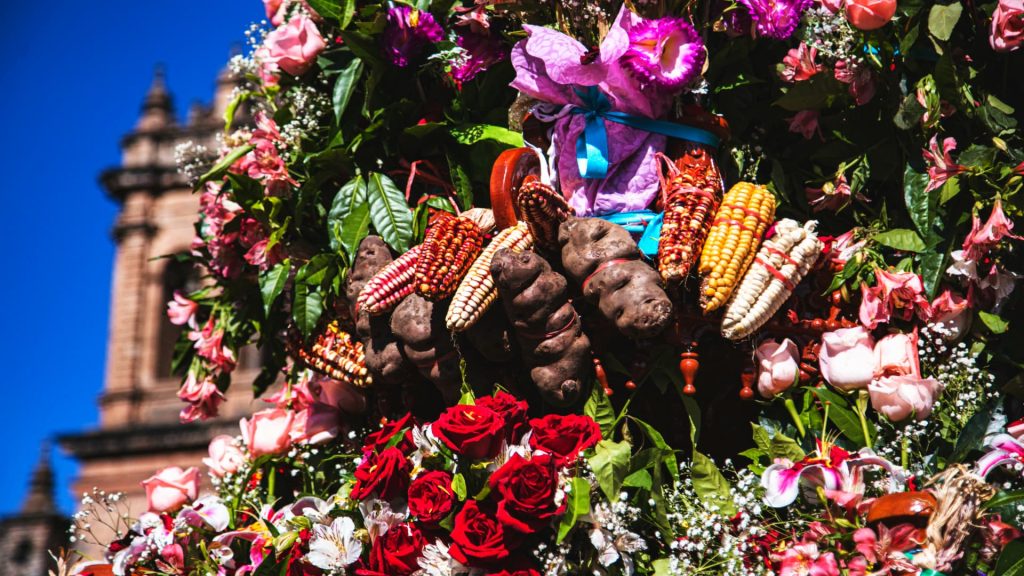
The Gathering of the Saints: A Moment of Union
One of the most moving traditions of Corpus Christi is the meeting of the saints. This symbolic act takes place when the images of the saints from the different churches of Cusco meet in the Plaza de Armas. It is a moment of great spiritual significance, where the faithful believe that the saints greet and bless each other, establishing a divine connection.
This act is considered a symbol of union not only between the different invocations of the saints, but also between the Cusco community and the spiritual world. It is a moment of recollection, prayer and thanksgiving, and for many, it is an experience that allows them to renew their faith and commitment to the community.
During this festival, the inhabitants of Cusco and tourists feel part of a large family, united not only by religious devotion, but also by the shared culture that, over the centuries, has shaped the Peruvian identity. Corpus Christi is an event where the sacred and the cultural merge in a celebration that goes beyond the religious, becoming a feast for all the senses.
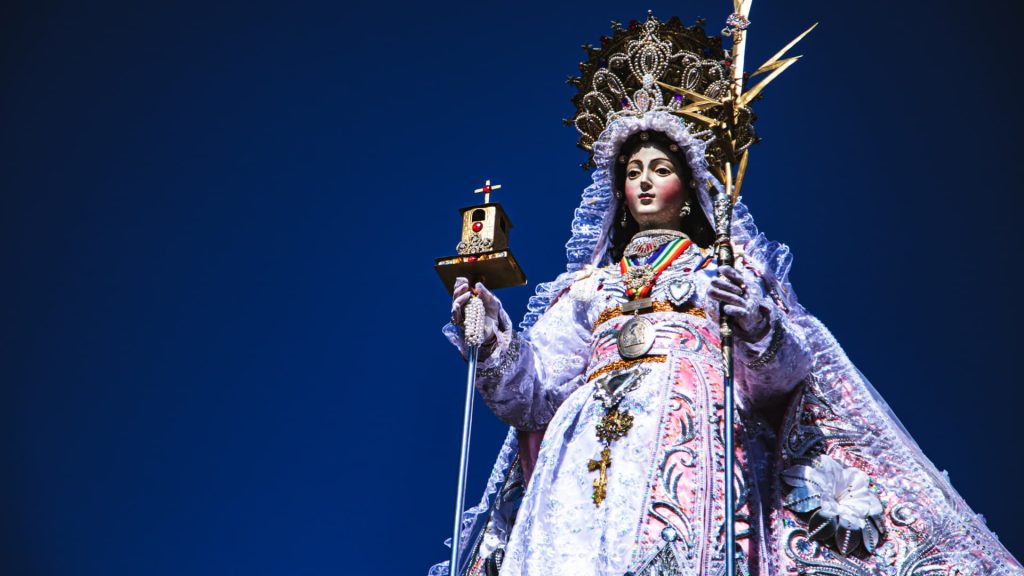
Gastronomy and Traditions: A Banquet of Flavors
As in all great Peruvian festivities, Corpus Christi in Cusco would not be complete without a special culinary offer. During these days, the plazas and streets of the city fill with vendors offering traditional dishes that have a strong connection with the Andean tradition. The flavors of Cusco’s gastronomy stand out, and the festivity provides the perfect opportunity to enjoy delicious tamales, chiriuchu (a typical dish prepared with cold meats, corn, potatoes, and other local ingredients), and special breads that are only prepared at this time of year.
The food during Corpus Christi is not merely a feast for the palate but also a celebration of the abundance of the Cusquenian land. Many of these dishes carry a deep symbolic meaning, linked to both pre-Columbian customs and the influence of Catholicism.
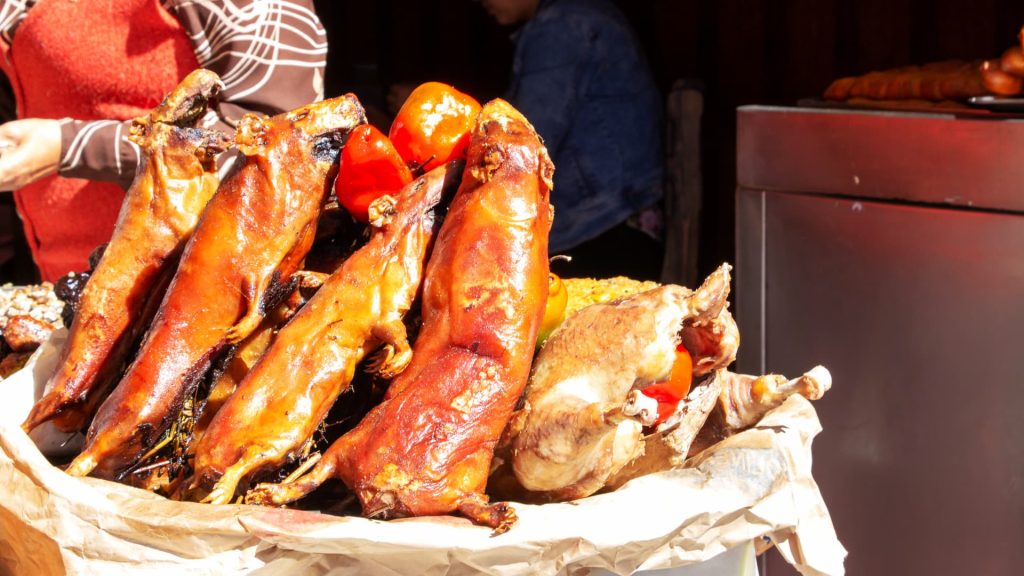
A journey of encounter and reflection in the Corpus Christi
Corpus Christi in Cusco is not only a religious festival, but an opportunity to connect with the very essence of Peruvian culture. It is a moment of encounter, not only with the divine, but also with the deepest roots of the people of Cusco. The celebration invites travelers to immerse themselves in a whirlwind of traditions, colors, aromas and sounds that tell the story of a people that has preserved its identity over the centuries.
By attending this celebration, you are not only a spectator, but also part of a cultural exchange that will allow you to better understand the complexities of Peru, a country where the sacred and the earthly coexist in perfect harmony.
